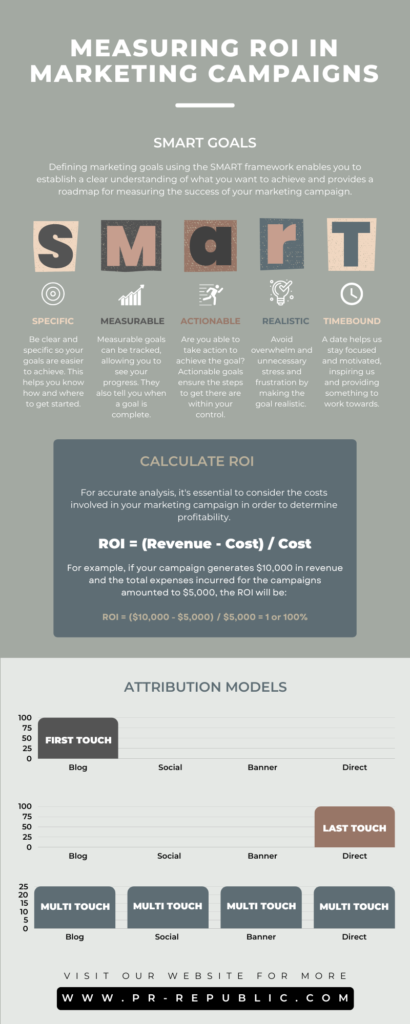In today’s world of B2B marketing, measuring the return on investment (ROI) of your campaigns is crucial. B2B marketing is all about building relationships, establishing trust, and driving revenue. However, measuring the effectiveness of your marketing campaigns can be challenging, and not all marketing strategies will provide the same ROI. In this article, we will discuss how to measure the ROI of your B2B marketing campaigns in the resource sector.
Many businesses today want to be able to sell online. However, we caution that before spending ad-dollars, ensure that your product actually sells. That means that someone in your organisation has been successful in selling your product or service to strangers (i.e not friends and family), and that they have used it, and have provided feedback. This provides two crucial pieces of information, namely,
- That your product or service is viable and marketable
- Your ideal customer (you will want to target similar profiles of those people who have bought your product or service and are using it successfully).
The third thing that this offers is feedback and social proof. Feedback and social proof (case studies, testimonials etc) make it easier to market. To win your first few customers is always the hardest, but once you have had some initial success, then it becomes easier and easier to build a customer pipeline.
So assuming that you have a great product and service and have now decided to spend on B2B marketing, how do we measure the success of your marketing efforts?
Set clear goals with the SMART framework
Before you start your marketing campaign, you need to define clear goals using the SMART framework. SMART stands for Specific, Measurable, Achievable, Relevant, and Timebound. These criteria ensure that your goals are well-defined, trackable, attainable, aligned with your business objectives, and have a defined timeframe for completion. For instance, instead of simply aiming to increase website traffic, a SMART goal would be to increase website traffic by 20% within three months through targeted SEO strategies and social media advertising. Another example of a SMART goal could be to generate 100 new leads per month by implementing a lead magnet and optimizing landing pages for conversions. By setting SMART goals, you establish a clear understanding of what you want to achieve and provide a roadmap for measuring the success of your marketing campaign.
Track results for comprehensive analysis
To measure the ROI of your B2B marketing campaigns, you need to track your results. The metrics you track will depend on your goals. For example, if your goal is to increase website traffic, you can track the number of unique visitors, bounce rate, and time spent on the site. If your goal is to generate leads, you can track the number of leads generated, conversion rate, and cost per lead.
Calculate costs for accurate ROI analysis
To determine the return on investment (ROI) of your B2B marketing campaigns, it’s essential to consider the costs involved and calculate the profitability. Costs may include variables such as advertising costs, employee salaries, marketing software subscriptions, and other relevant expenses. Once you have a clear understanding of your costs, you can calculate the ROI using the following formula:
ROI = (Revenue – Cost) / Cost
For example if your B2B marketing campaigns generated $10,000 in revenue, and the total expenses incurred for the campaigns amounted to $5,000, the ROI can be calculated as follows:
ROI = ($10,000 – $5,000) / $5,000 = 1 or 100%
In this scenario, the ROI of your marketing campaigns would be 100%. This indicates that for every dollar invested, you gained an additional dollar in revenue.
Calculating the ROI helps you evaluate the profitability of your marketing efforts and make informed decisions regarding resource allocation. It allows you to assess the effectiveness of different campaigns, channels, or strategies, and make adjustments accordingly to optimize your marketing activities for better returns.
Use attribution models for campaign analysis
B2B marketing campaigns typically involve complex buyer journeys with multiple touchpoints across various channels. As a result, it can be challenging to accurately attribute revenue to specific campaigns or channels. To solve this problem, you can use attribution models to give credit to each touchpoint. These models can be first-touch attribution, last-touch attribution, or multi-touch attribution.
- First-Touch Attribution: This model attributes all revenue generated to the first touchpoint or interaction that a customer has with your marketing efforts. It assumes that the initial interaction played the most significant role in influencing the purchase decision. For example, if a prospect initially finds your product through a blog post and later becomes a customer, the revenue generated would be attributed solely to the blog post.
- Last-Touch Attribution: Conversely, last-touch attribution assigns all revenue to the final touchpoint or interaction before the conversion. This model assumes that the last touchpoint was the most influential in driving the purchase decision. For instance, if a prospect clicks on a retargeting ad and then converts into a customer, all the revenue would be attributed to the retargeting ad.
- Multi-Touch Attribution: This model acknowledges that multiple touchpoints contribute to the customer’s decision-making process. It distributes the revenue across various touchpoints, recognizing the combined impact of multiple marketing activities. So if a prospect interacts with your content through a blog post, later engages with your social media ads, and finally converts into a customer after attending a webinar, you would allocate a certain percentage of the revenue to each touchpoint, acknowledging their individual contributions to the conversion.
By employing attribution models, you can gain insights into the effectiveness of different touchpoints, channels, or campaigns.

Benchmark results for comparative analysis
To understand the success of your B2B marketing campaigns in the resource sector, it is best practice to benchmark your results. This involves comparing your results to industry standards, your company’s previous campaigns, and your competitors. Benchmarking helps you identify areas where you need to improve and areas where you are excelling.
Adjust your strategy based on ROI analysis
The final step is to analyze your results and adjust your strategy accordingly. By analyzing your ROI, you can determine which marketing campaigns were most effective, and adjust your strategy accordingly. You can also identify areas where you can improve your marketing campaigns to increase your ROI.
Therefore, measuring the ROI of your B2B marketing campaigns is not a one-time task. Rather it should be seen as something you continually need to measure, analyze and adjust your strategy to achieve the best results. Not all marketing strategies will provide the same ROI, so it’s important to use the insights you gain from measuring the ROI to refine your approach and optimize your campaigns.










